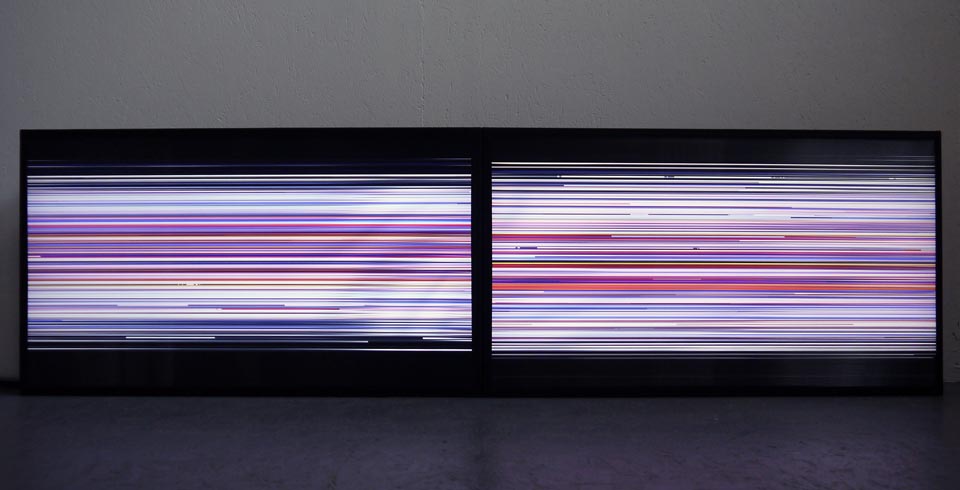Pascal Dombis
Antisana
Pascal Dombis is a french a digital artist who has been working on this medium for more than 20 years. Dombis has been using computers and algorithms to produce excessive repetition of simple process. By computationally reproducing a geometrical or typographical sign, he creates restructuring structures which develop into irrational environments. What interested me most when reading the excerpt from class the description of how he made his pieces. In Antisanna, Dombis uses a recursive process to code the images that are created and then evolved off of the other. In computer science recursion was one of the more complicated things I learned when first learning the language. When I'm coding something recursively there is nothing aesthetically pleasing about writing it at all. It's usually just taking a input from the user and then using a recursive function to cycle through a function so many times until the function does what the user wants. Recursion as an art form is fascinating and the abstract pieces that Dombis is able to create seem so simply made and artistic that you would never think about the amount of coding and manipulation of code that goes on beneath the surface of the piece.
Line_Wave
The part of the reading that drew me in most about Dombis was just the description of recursion as an art and how it is used to model natural phenomena. If you look at Antisana it looks very symmetrical all of the lines travel around the piece in different layers yet each side seems to be symmetrical and seem to all join at the center of the piece. This piece gives a perfect visual representation of what the recursive process is. In recursion you start off with one simple thing that is given to you. In a computer scientist terms you start off with whatever data is given to you. As a digital artist you look at your start point and see how you can evolve it from there. Once you obtain your data (or start point) you can code it so that function you code can technically go on and evolve into whatever you want it to until you've reached whatever end point you've decided in your function. As a computer scientist recursion can be simple but I can only imagine what it would be like to create an piece of art with recursion. It would take so much trial and error to make sure each line that you draw in the piece goes the way you want it to and it would take a complete mastery of the recursive process. Coding it would be a very long process to create something that Dombis created. This article explains that computer art hasn't taken off as an art form and I think the main reason for that is that a majority of the viewers don't see the process behind it.
![[ENG] CensorZip explores the notion of censorship in China and built a sensational environment that deals with the legibility of images coming from censored web pages. The mass of...](http://dombis.com/wp-content/uploads/2012/12/1_CensorZip_1_r-230x160.jpg)
CensorZip
After looking at many of his works online, it seems like every piece he creates has a very digital feel to it. Some digital artist look towards animating characters or creating life like image in their pieces but all of his seem very abstract. However, every one of his pieces make me feel that there is a computer somewhere behind the image. In Censor zip the rectangular lines and kind of puzzle piece look to it makes me thing of it as like an abstract version of some sort of data chip. In Line wave it literally looks like a computer screen that isn't working the right way. Even in Antisana all of the lines look like an intricate jumble of wires that make up the piece. In making all of these subtle relationships to computers and technology he is able to express his process that is not seen by many of his viewers. That's the part I like the most about his pieces, he brings the medium he works with to life an makes people question how it was made.





